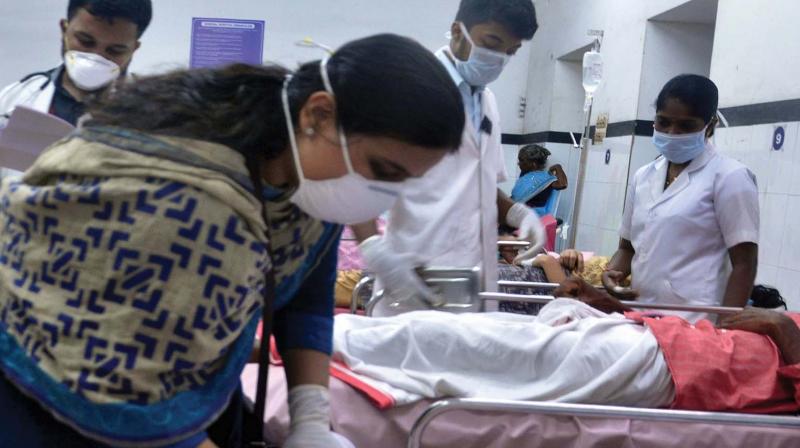Experts propose genetic sequencing for Nipah virus

KOZHIKODE: Experts have recommended the genomic sequencing of the Nipah virus to trace its origin. Though all hopes of finding the source are in fruit bats, the mammal is yet to be caught. Besides, there is an opinion that only four percent of the fruit bats are hosts of NiV, making it difficult to conclude. It's in this context they recommend genomic sequencing. “The genomic sequence of NiV in Malaysia, Bangladesh and West Bengal is available. It could be compared with the sequence of the RNA of the virus collected from the human body here,” says Dr K.P. Aravindan, science activist and former professor of pathology at Kozhikode Medical College.
“There are 18,000 nucleotides in the sequence of NiV. It would vary in the virus found in different places. If the genomic code of the virus in Perambra matches with that of Malaysia or Bangladesh, we can almost track the arrival route,” says he. IMA also advocates for it. “It will help in identifying the source. Besides, identifying the IgG (Immunoglobulin G) antibodies in fruit bats of neighbouring areas will also be a pointer to the source,” points Dr E.K. Ummer, IMA state president. Dr G. Arun Kumar, head of Manipal Centre for Virus Research (MCVR), who was one among the first to identify NiV in Perambra, felt that it need to test several hundreds of fruit bats to obtain a Nipah virus.
“The easy way to link is testing bat's blood samples for Nipah specific antibodies. These efforts are on and will take time. We at MCVR are doing the full genome sequencing of NiV from the human samples. Investigation around the index case is on in several fronts. Hope we will be able to zero in soon. This is a big challenge and will take time,” he said. The government says it would explore all options to trace out the origin. Health sources said Malaysia took two years to track the source and it was not identified at all in West Bengal.
Railways, buses bear brunt
Nipah scare affected not only on fruit market but also transport modes. Due to fall in the number of passengers on the Kuttiadi-Kozhikode route, private buses have cut short trips. Kozhikode railway station suffers a loss of Rs 2 lakh per day and KSRTC, Rs 6 lakh. Though fewer passengers are common during Ramzan, NiV fear has affected the number, said Joseph Mathew, railway station manager here. The daily income of Kozhikode railway station was usually Rs 13-'16 lakh, but in the recent week, it was just above Rs 10 lakh a day.
The average income of KSRTC Thottilpalam Depot was Rs 6 lakh, and now it does not exceed Rs 5.5 lakh now. Thottilpalam is the nearest depot to the Nipah hit Perambra. The depot which had made Rs 6,91,000 revenue on May 14 has witnessed a steep decline to Rs 4,79.000 on May 21. Wayanad-Thottilpalam, Thottilp-alam – Kozhikode routes are severely affected. Thottilpalam – Kozhik-ode route KSRTC buses which usually earned Rs 13,000 daily, now recei-ve only Rs 6,800 which may lead to cancellation of services, depot authorities said.
Private bus owners on the Kozhikode- Kuttiady stretch is also facing a decline in the number of passengers. Perambra is en route to Kuttiady. At present, 45 buses are plying on the route with three minutes interval. Renish Thottathil, the Omega bus owner, told DC that they would approach the district collector for the withdrawal of half of the services in alternate days, leading to an interval of 10 minutes in between two buses. “The current situation is such that we have to put money from our hands to run the buses,“ said M. Thulasidas, general secretary, District Bus Operators Association.

